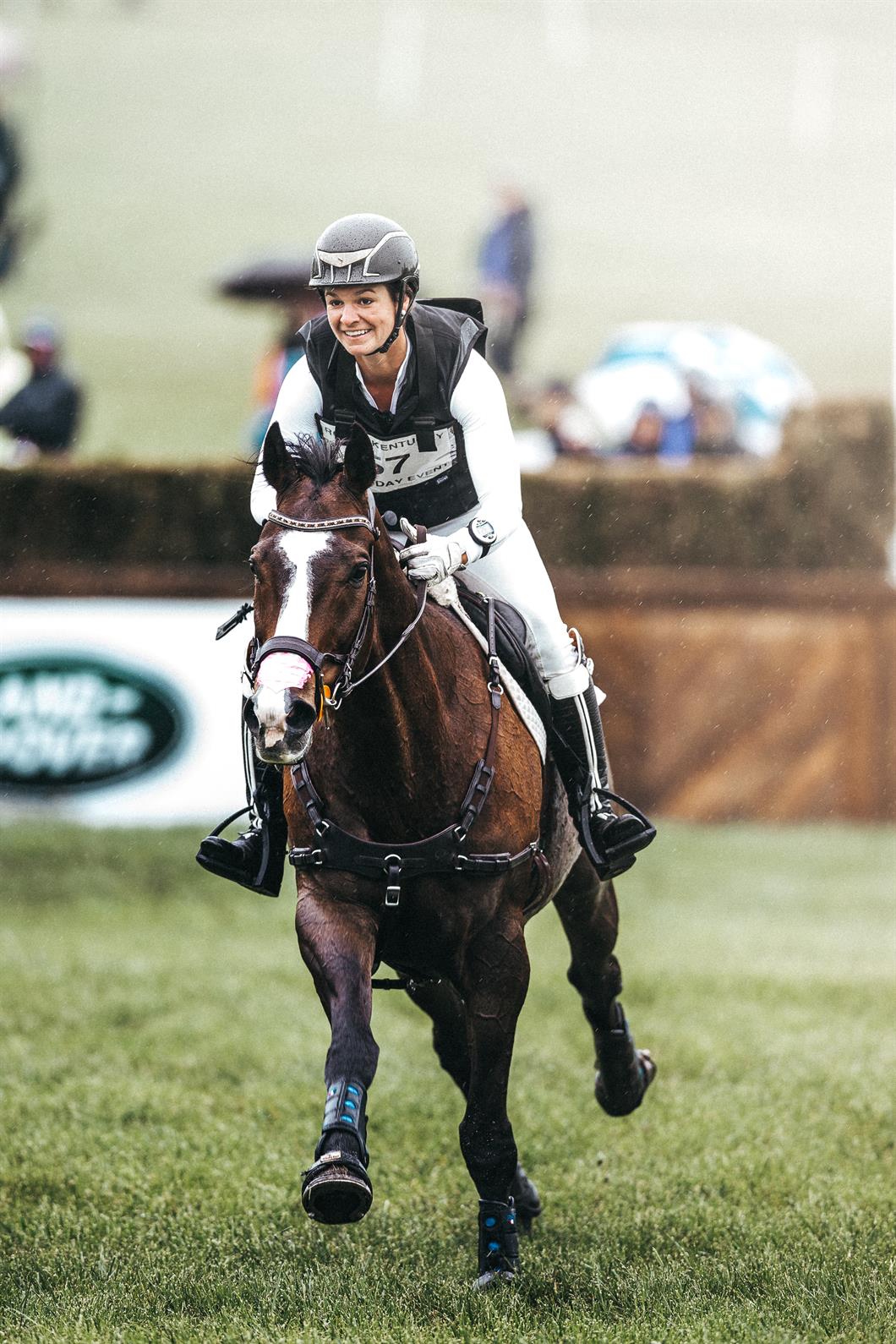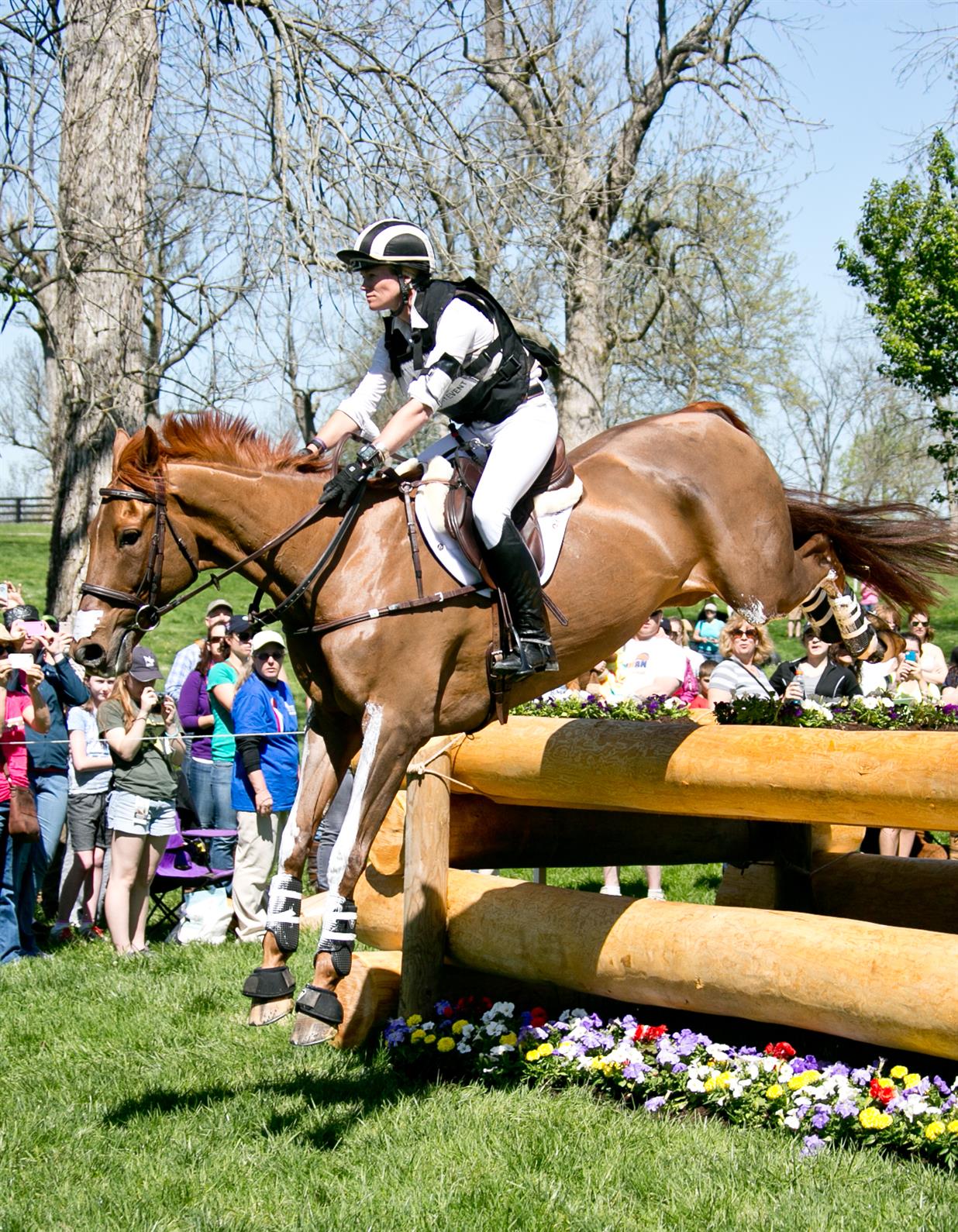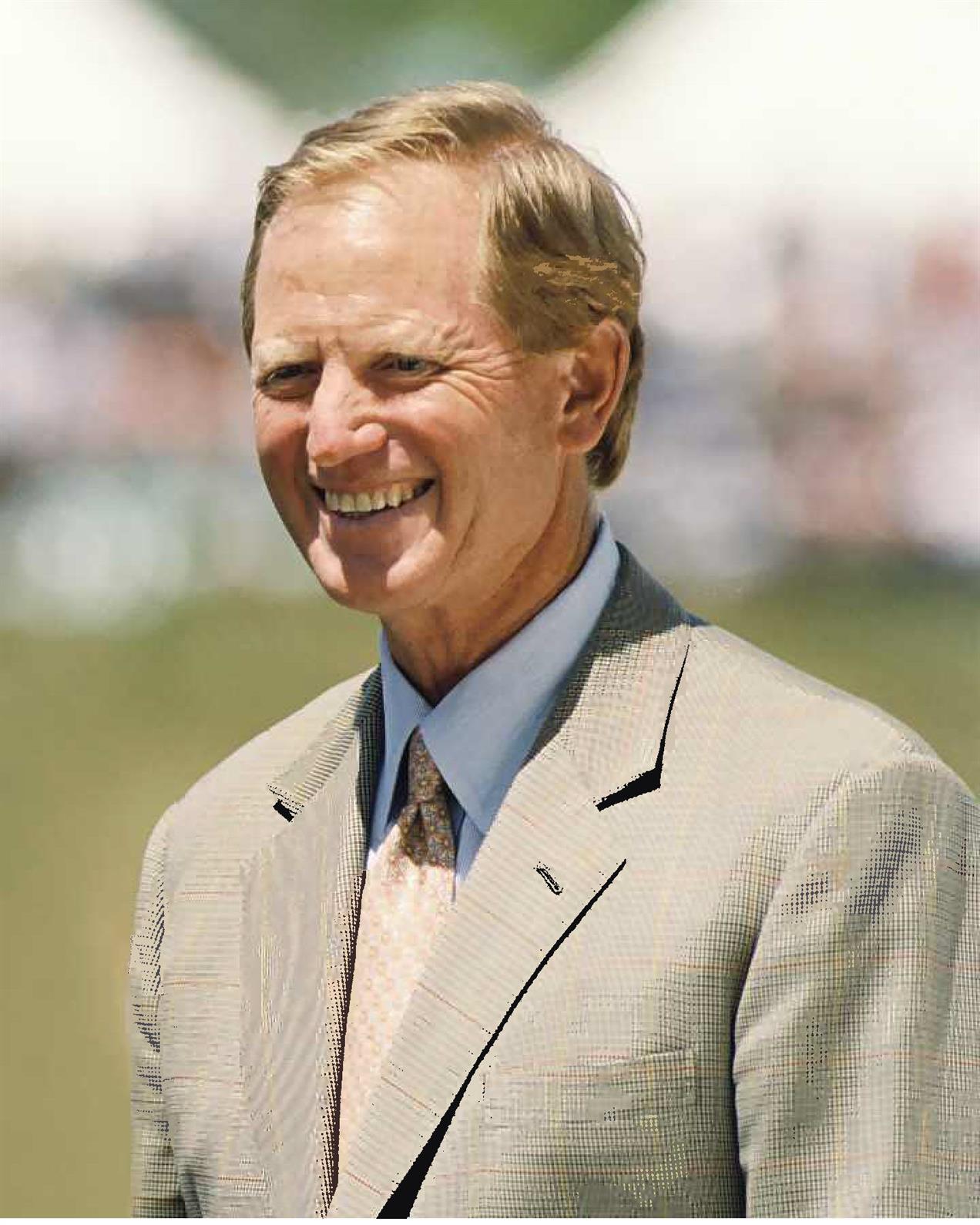
Leah Lang-Gluscic
Leah Lang-Gluscic completed her first Rolex Kentucky Three-Day Event in 2016 aboard A.P. Prime.
“Last year was the first time that we attempted all the phases successfully.
“Rolex is a spectacle, in the best way possible. You think you’re going to get there and it’s going to be this long week of waiting. But with A.P., in particular, I had such a huge fan base for him that I was occupied every single second of the entire week. It’s nice, because you don’t have time to sit and worry about how big and long the cross-country is or about how your horse might be wild in dressage. So it’s unique in that there really is something for the riders to be doing almost every minute of the competition. Personally, for me, I love that.
“My favorite part of it was being able to connect with all his fans and all the people who followed his story of being bought for $750 and then followed him all the way up the levels. There were people coming up to me saying, ‘I saw his first preliminary!’ That was amazing. There’s never really been another venue where I’ve been able to experience that on such a huge scale.“
Sinead Halpin
Halpin finished third in her first Rolex Kentucky event in 2011 with Manoir de Carneville, earning the pair the Rolex/USEF CCI4* Eventing National Championship.
“I’ve been there a thousand times to watch, but I’ve ridden there three times. I think every time I have gone it’s been a little different. It’s truly the pinnacle of the sport, and one of the things that three-day eventing does is it wraps so many emotions and so many experiences into one weekend., right? Rolex is like that times 100.
“You get there on Monday, and you pull off that exit and it’s unbelievable: rolling green hills, and all the signs for Kentucky, and you kind of pinch yourself. Did you really make it there? Because until the horse is loaded you’re kind of crossing your fingers that everything’s going to hold together.

“One of the really awesome things is that there are two faces to Kentucky. Behind the scenes, over the course of the seven days you’re there, everyone really becomes your family. It’s very community-oriented. There are sixty- or seventy-something riders, and you’re kind of living with each other, going through the same roller-coaster of events throughout the weekend. And it’s very quiet in the barns. People are very respectful, and the public can’t get in there. It becomes your home. That’s something that I’ve enjoyed, and it’s different from a normal horse trials, where everyone is running around and you don’t have time to see anyone or talk to anyone. At Rolex, you’re normally riding one horse or maybe two, and you have seven days, so you’re spending time with those in your community. Throughout the season, everybody kind of gets to be close friends, because everyone knows who’s got their eye on Rolex. By the time you get there, you get there together. On Monday, everybody’s breathing a sigh of relief, but by Wednesday everybody’s holding their breath again! But that, to me, is one of the most awesome parts: showing up and making friends and sometimes having some of my closest friends there with me and going through the experience together.
“The other side of it is the magic side, right? The grandstand, the amazing cross-country field, and the people. You kind of get tunnel vision and you don’t realize how many people are fans of the sport of eventing. And then you show up at Rolex and there are 80,000 people! That’s kind of a plus and a negative. It kind of blows your mind, but you have to put that aside and get to work, because it’s a serious job. If any horse and rider combination is lucky enough to get to attack it, it’s one of the biggest jobs they’ll ever do.
“One of the things that’s nice about being there for the week is that you have time to pinch yourself and have those ‘Oh my God!’ moments, and then you have to put it away and put on your breeches the same as you do everyday.
“I thought I would get to a competition like that and think, ‘Ha! I’ve made it!’ And that part doesn’t happen. You wake up on Monday after Rolex and think, ‘Oh my God, I need to do this better, I’ve got to get back to the barn, I’ve got to sharpen up, the level is so much better than where I’m at, I’ve got to get back there next year and actually win the damn thing, I need to do x, y, z.’ Your brain starts going like crazy. But what does happen is you realize it’s attainable. When anyone starts at something as a dream and then works towards it as a goal, there’s always a question mark in your mind: is this actually possible? When you achieve that and you get there, you realize it’s attainable. It inspires you to work harder. It inspires you to be better.”
Elisa Wallace
Wallace first attended Rolex Kentucky as a spectator in 2008 and returned in 2014 to give a training demonstration with her mustangs. She rode there for the first time in 2015 with Simply Priceless, with whom she also finished sixth last year.
“There’s nothing that compares with going to your first Rolex. You have this weird thing of, ‘Oh my gosh, we’re here, and I don’t really believe that I’m here!’ It’s a surreal feeling. That stuck with me throughout the whole thing; I kind of felt outside my body.
“One of the moments that sticks out in my mind was when we came in to show jump and the sound from the crowd was deafening. My horse just loved it, and it was such a cool feeling. He’s a very nervous type of horse, so at the smaller venues he can be very naughty and get upset at the slightest sound or thing. But when he was at Rolex, there was just something about the stadium. He would just put his hat on and go to work. It was a really nice to feel that I had a rideable horse.
“On cross-country, there’s that feeling of being on the world stage. Last time, I was right behind Michael Jung in the numbers, so I followed him for the dressage test and everything. It can kind of get in your head if you’re not careful, but it was fun to see if you can measure up against him. And to hear your name on the speakers is just so cool.
“The first year, it’s kind of nice, because you’re a rookie and you don’t have all that pressure. But it’s definitely a head game. So you tell yourself it’s just like a regular show. That can help your nerves. That’s the biggest thing: just trying to keep your nerves under control. I took advantage of that feeling of ‘I can’t believe I’m here’ and just pretended that I was there doing the demos with my mustangs. It definitely worked to keep me relaxed. You really have to practice your mental game and learn how to keep yourself relaxed, even if it’s just lying to yourself!”

Jimmy Wofford
Olympic medalist Wofford won the Rolex Kentucky Three-Day Event in 1981 with Carawich and again in 1986 on The Optimist when the event was a long-format competition. He’s also coached many riders there and regularly serves as a commentator.
“I went around the course probably 10 times. It was always a challenge. First of all, it was a challenge for everybody because it was a classic format. I never rode in the modern short format. And, of course, I especially remember ’81 and ’86. The first Rolex sponsorship was in 1981; before that it had been the Kentucky Three-Day Event, even though it already took four days to put it on back in 1981. So I have the first Rolex watch that was ever won there.
“I retired after the 1984 Olympics, but I did make a comeback in 1986 and won it on a borrowed horse, which was kind of frosting on the cake.
“I had watched The Optimist, and he was a difficult horse, but I always secretly thought that I could ride him. He was owned by Bert and Diana Firestone, who more recently are better known for their show jumping. This horse had been ridden for them by several other riders with not much success. He was quite difficult and very, very strong on cross-country—he was a great big, strong Irish horse. I just had always felt that I wanted to see whether my instincts were right or not, and, fortunately, they were.
“I do remember riding out of the arena after the ceremony thinking, ‘I’m retiring again just in time.’ Retirement didn’t take the first time, but it did take the second time!
“The step up to a four-star is more in the rider’s mind, number one, and, number two, it’s a little bit in the horse, in that they will go this distance for the first time, if they’re a Rolex rookie. That last couple of minutes, that’s the longest two minutes you’ve ever spent in the saddle. For many, for the first time your horse starts to hit the wall, and you have to make very, very good, intelligent decisions from that point, very horseman-like decisions.
“My advice is to ride it the way you walked it. These combinations now have multiple routes through them, and we try to pick the best route through them for the horse and rider. But they need to have walked every possible permutation and combination so that if they jump into the Head of the Lake and the horse lands at a dead stop, they go to Plan B, right now. Your first plan already hasn’t worked, because it was based on landing and going on in a straight line. They have to have the next alternative already in their head.”

Kim Severson
U.S. Olympic medalist Kim Severson won Rolex Kentucky three times with Winsome Adante, who was owned by Linda Wachtmeister’s Plain Dealing Farm. This year she’s competing at Rolex with The Cross Syndicate’s Cooley Cross Border.
“For the years that I was with Linda [Wachtmeister], they still had the tie pinneys for your number. It was always a thing that we did: Linda tied my number for me before I went on course. That was always a special thing because it was our thing.
“The best feeling you can possibly have at Rolex is finishing cross-country, especially clean! For me, I get to a certain point on course and I go, ‘Okay, I’m through the hardest part or whatever worried me the most.’ Then it’s a matter of keeping it together and not doing anything stupid. Basically, once you get through the finish flags and you’ve done everything you can do, it’s just a relief, truthfully, a huge relief. Hopefully, you didn’t do anything stupid and the horse feels good and happy and has learned from it.
“Whoever is your groom at the time, there’s always that moment after cross-country where you’re done, and there’s that relief between the two of you. That’s always the best time for me with my grooms, after that really stressful cross-country situation.
“It’s a whole new competition the next day. It doesn’t matter if you win the dressage; it’s a whole new competition for cross-country and it’s the same again for show jumping, particularly being that I have on more than one occasion gone into show jumping in the top three and not been successful!
“The first time you win Kentucky, it feels unreal. It’s such a major thing. When you finally have put all those days together and it’s successful every day, not a bad day, to produce a win—it’s unreal.”
Doug Payne
Payne first tackled Rolex Kentucky in 2012 with Running Order, then owned by Stone Hill Farm. This year, he returns with his 2016 mount Vandiver, a horse he co-owns with Debi Crowley and Jessica Payne.
“The first time going down the chute into the arena there for dressage was probably my most memorable moment. Of course, you can’t beat having a cross-country round and all that, but that’s what’s etched in my mind: the first time going down the chute and stepping onto that stage.
“Growing up, you’re imagining that at some point in the future you might have that opportunity, and then the fact that it’s actually happening is humbling, it’s rewarding, and you feel very lucky to have the chance to do it. From that point on, you try to make the most of it. You want to capitalize on the opportunity you have, so you refocus on the performance itself. But for a couple of steps down the ramp, you’re thinking about what a special opportunity it is, for sure.
“You certainly have respect for the cross-country course. Having spectated and walked the course a number of times in the past, I had a pretty good idea of what it was going to be. The massive unknown, though, is how exactly your horse is going to handle it, especially the first time.
“You sort of have a wave of sound following along behind you. The first time, I didn’t expect that. But you’re so intently focused on the task at hand that you have a little bit of tunnel vision and you really don’t think about the spectators.
“The finish line is my favorite part of the course! There are so many different challenges as you’re going around that there’s certainly a sense of accomplishment when you’re finishing up. For me, the first time getting around there successfully, you know you got a horse there once and you can do it again, and that gives you a lot of confidence. And I would say it makes the horses that follow behind even better, because you know the path you took and you know what to expect and how they responded, so you can make it better and better for the horses after that.”
Dorothy Crowell
Lexington native Crowell and Kentucky-bred Molokai were hometown heroes when they won the first Rolex/USEF CCI4* Eventing National Championship in 1998, the first year the event was run as a four-star. The pair finished second overall that year at a time when Rolex Kentucky was still a long-format competition.
“My main memory, the one I go to anytime I think of Rolex, would be of the first four-star in 1998. It was Molokai’s final three-day event after a pretty amazing career, and it was in our hometown. It was the only competition where every stride he took, people were cheering—the whole 14-minute course, from when we left the box. On the gallop stretches there were only a few people, and sometimes, as when we were going through the Head of the Lake, there seemed to be thousands of them.
“Normally, when you were out on a 14-minute course, you’d have long stretches when it would just be you and your horse, galloping. And normally you don’t really notice the crowd. You’re a little too focused on what’s in front of you. That’s probably another reason that Rolex was so memorable to me: because I noticed it. I was able to enjoy that as peripheral noise and keep my focus, but somewhere in the back of my brain, I remember thinking, ‘Wow! This is remarkable! This is amazing!’ It was special, that we were having such a great ride and that we were supported so thoroughly.
“All these years later, I’ll have people come up to me and say, ‘I still have Molokai’s poster on the wall!’ He had a pretty big fan club, and he deserved it.”
Want articles like this delivered to your inbox every week? Sign up to receive the Equestrian Weekly newsletter here.
This article is original content produced by US Equestrian and may only be shared via social media. It is not to be re-purposed or used on any other website than USequestrian.org.


